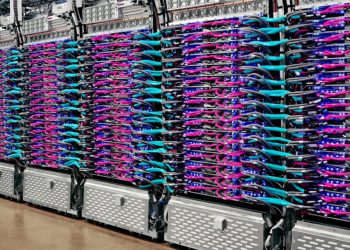When it comes to analyzing data and building models, the gold standard of the modern world is machine learning. It is a subset of AI or artificial intelligence that states, without human intervention, systems can actually learn from inputted data, figure out the patterns that lie underneath and execute decisions based on what is figured out.
But while most people familiar with machine learning today can easily connect it to the idea of systems calculating big data using complex formulas over and over with increasing speed, that is actually a modern take on machine learning. In fact, machine learning algorithms have been present for many years already, and machine learning as we know today is an accumulation of knowledge and development done by researchers and engineers of the past.
Now, why is machine learning critical in the modern era? While most people might have heard the term and at the very least have a broad understanding of what it does, machine learning’s importance in society is something that requires a bit of a deep dive in order to fully appreciate.
Information is power, and information can only be derived from data. And the world has an unfathomable amount of it just waiting to be sorted and processed into information that different entities can use for the betterment of our world. Machine learning makes complex data analysis and delivery faster and yields more precise results even on massive scales. These precisely built models can help organizations pinpoint valuable opportunities and skirt around avoidable problem areas.
Machine learning systems are utilized by large and highly important organizations, such as financial institutions, various government agencies, minor and major health care facilities, and medium to large scale businesses. These, in addition to utilities agencies such as those for fuels, transportation, water, and electricity, all use machine learning to process crucial data to be able to make the right decisions.
But that’s not the only use of machine learning systems. Despite its critical role in the advancement of modern society via large institutions, machine learning is also employed in other things like predicting the result of sporting events, and on an individual level, to try and predict the trends of stock market movements to make the proper investments.
And now that you’ve been brought up to speed with how machine learning works, if you want to get in on the action, here are a number of learning algorithms that beginners can use to get started on machine learning.
- Linear Regression is an algorithm that aims to figure out the values of a and b in the equation y = a+bx
- Logistic regression applies a transformation function resulting in predictions that are discrete values, and is suited for data sets of a binary classification. The end result of logistic regression algorithms is probabilities, generated by log transforming given values using the logistic function h(x) = 1/(1+e^-x)
- The CART or Classification and Regression Trees algorithm is one example of how to implement the system called Decision Trees. It’s called “trees” in that the entire algorithm is similar in nature to that of a tree. There are non-terminal nodes seen as root nodes and internal nodes and terminal nodes seen as leaf nodes, all synergized into a model that is used to make predictions of outcomes.
- Bayes’ Theorem, aka Naïve Bayes, is an algorithm that is used to predict the probability of a situation occurring based on other situations that have already happened, using the theorem P(h|d)= (P(d|h) P(h)) / P(d).
There are countless other algorithms that machine learning systems use but these examples, along with others not listed here, are stepping stones beginners can use to get their feet wet in the industry.

for developers and enthusiasts







